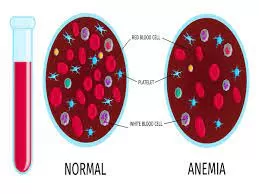The COVID-19 pandemic has laid bare a critical issue within the U.S. healthcare system: the increasing reliance on foreign-born physicians. Today, one in four doctors practicing in the United States is an international medical graduate (IMG). This workforce is particularly vital in underserved areas—regions often characterized by low income and a scarcity of healthcare providers—where many American doctors are reluctant to work.
Despite their integral role in mitigating a looming physician shortage driven by an aging population and a declining interest among U.S.-born doctors in primary care, aspiring foreign doctors are facing increasingly daunting challenges in navigating the immigration landscape.
The Immigration Challenge
Immigrant physicians are essential to addressing the growing demand for healthcare professionals. However, the pathways for these doctors to immigrate and practice in the U.S. are fraught with complications. As outlined in a dissertation on the subject, many foreign doctors express concerns about stricter immigration policies and heightened competition for residency positions, making the U.S. a less accessible destination for medical professionals.
To practice in the U.S., foreign physicians must pass rigorous licensing exams and secure clinical experience—often done under tourist or student visas. Yet, the most significant hurdle remains obtaining a residency position, which is a prerequisite for practicing medicine in the U.S., regardless of prior training or specialization in their home countries.
Visa Complexity and Residency Requirements
Historically, many IMGs entered residency programs under H-1B visas, which allowed for both immigrant and nonimmigrant intent. However, increased restrictions on this visa category, coupled with cuts in graduate medical education funding, have pushed most foreign doctors towards the J-1 exchange visitor visa. While this visa offers a potential pathway to work in the U.S., it comes with a stipulation that requires doctors to return to their home country for at least two years after completing residency.
Despite the challenges, many foreign doctors still pursue the J-1 visa due to the opportunity to apply for a waiver, allowing them to remain in the U.S. for a minimum of three years in underserved areas. However, this arrangement can lead to exploitation, as employers may impose demanding work conditions and low compensation, with little recourse for physicians wishing to change jobs.
Financial and Emotional Burdens
The financial burden on international medical graduates is considerable. Many invest tens of thousands of dollars in medical licensing exams, visa applications, and living expenses during their unpaid training. To compete effectively for residency slots, IMGs must often excel in exams and have impressive research credentials, while also needing to perform exceptionally compared to their American counterparts.
The situation has become increasingly competitive, leading many to pursue additional degrees in health-related fields in the U.S. as a strategy to bolster their applications—a decision that adds further financial strain.
The Green Card Backlog
Completing residency is just one hurdle; many IMGs find themselves in limbo post-residency due to the lengthy green card approval process. The average wait time for a green card has doubled since the 1990s, with Indian nationals facing the most significant delays, often waiting up to a decade for permanent residency. Such protracted waits prevent many doctors from visiting family abroad, exacerbating the emotional toll of the immigration process.
Lack of Reform
Despite ongoing calls for reform, the challenges posed by the current immigration system continue to affect both physicians and patients adversely. The system’s inefficiencies discourage talented healthcare professionals from pursuing opportunities in the U.S., as they face a complex web of regulations and protracted waiting periods.
The paradox is stark: while the U.S. seeks to attract world-class talent, its immigration policies often do the opposite, pushing skilled professionals toward countries with more streamlined immigration processes. As the demand for healthcare professionals continues to grow, addressing these barriers is critical to ensure that the U.S. can adequately support its healthcare needs.
In conclusion, as America grapples with a healthcare workforce crisis, it must also confront the realities of an immigration system that complicates the journey for those who seek to contribute their skills and expertise. The future of healthcare in the U.S. may very well depend on the ability to reform these processes and welcome the very doctors that the nation so desperately needs.












